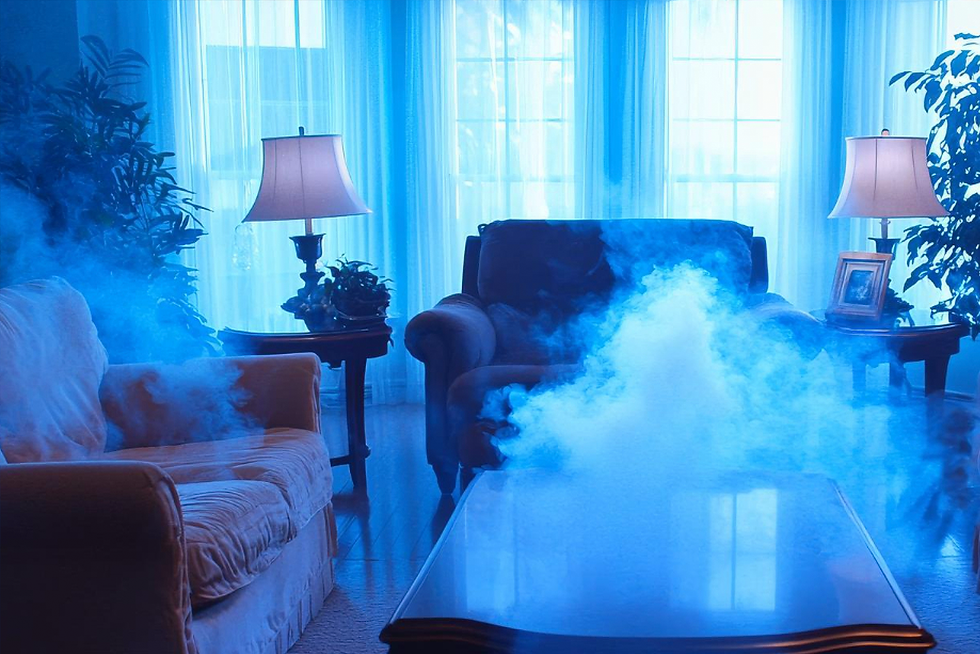Carbon Monoxide Alarms Required, Default Leakage Rate Removed in New ASHRAE Residential IAQ Standard
- Corey Provencal

- May 5, 2013
- 3 min read
Jodi Scott, Public Relations 678-539-1216, jscott@ashrae.org
ATLANTA – The newly published 2013 version of ASHRAE’s residential indoor air quality standard removes the default leakage rate assumption and also requires carbon monoxide alarms.
ANSI/ASHRAE Standard 62.2-2013, Ventilation and Acceptable Indoor Air Quality in Low-Rise Residential Buildings, is the only nationally recognized indoor air quality standard developed solely for residences. It defines the roles of and minimum requirements for mechanical and natural ventilation systems and the building envelope intended to provide acceptable indoor air quality in low-rise residential buildings.
One of the biggest changes in the standard over the 2010 version was an increase in mechanical ventilation rates to 7.5 cfm per person plus 3 cfm per 100 square feet. This is due to the earlier removal of the earlier default assumption regarding natural infiltration.
The Standard 62.2 Committee had previously assumed homes got a minimum of 2 cfm, per 100 square feet, according to Don Stevens, committee chair.
“Because research shows houses have gotten tighter and apartments have always been tight, the 2013 edition drops this default assumption and calls for the entire amount to be provided mechanically,” he said. “The only exception is when single family homes have a blower door test – then the predicted average annual leakage rate can be deducted.”
Another major change is a requirement for carbon monoxide (CO) alarms in all dwelling units. CO poisoning leads to hundreds of deaths and thousands of injuries each year in homes, resulting from automobiles left running in attached garages as well as from portable generators, power tools and heaters, according to Paul Francisco, committee vice chair. A small fraction of poisonings also result from failed central heating combustion appliances.
“Residents have very little ability to sense the presence of CO without detectors, unlike many other indoor polluting events,” he said.
Whether to include CO alarms as a requirement in the standard had been discussed since the standard was first proposed with debate focused on the unreliability and cost of alarms.
Francisco said the committee believes the time has come to make this change, noting that it brings the standard into closer alignment with the International Residential Code, which requires alarms if the house has combustion appliances or attached garages, and with many states that have passed laws requiring CO alarms.
The requirement goes a step further, expanding the protection to all homes, regardless of fuel type or garage configuration, reflecting the fact that many CO exposures occur due to causes completely independent of these factors, he said. It also requires that alarms be hard-wired with battery backup to address an increased likelihood of high CO exposure events during power outages.
Other significant new changes include the removal of the climate limitations on pressurization and depressurization; specifications related specifically to multifamily buildings; and new calculations and weather data for estimating annual leakage based on a blower door test.
The cost of Standard 62.2-2013, Ventilation and Acceptable Indoor Air Quality in Low-Rise Residential Buildings, is $58 ($48, ASHRAE members).
To order, contact ASHRAE Customer Contact Center at 1-800-527-4723 (United States and Canada) or 404-636-8400 (worldwide), fax 678-539-2129, or visit www.ashrae.org/bookstore.
ASHRAE, founded in 1894, is a building technology society with more than 50,000 members worldwide. The Society and its members focus on building systems, energy efficiency, indoor air quality, refrigeration and sustainability within the industry. Through research, standards writing, publishing and continuing education, ASHRAE shapes tomorrow’s built environment today.
#microshield #IESO #FloridaDBPR #Chapter468 #HB5007 #indoorairquality #SenateBill2234 #FloridaMoldLaw #mold #IICRC #IEQ32 #LEED #freemoldinspection #DepartmentofBusinessandProfessionalRegulation #moldpretreatment #MoldRelatedServicesLicensingProgram #SB1244 #PCBBCAS1101 #HB4171 #moldtesting #moldprevention #IndoorEnvironmentalStandardOrganization #healthyhome #ResidentialMoldAssessment #HB5005 #FloridaStatutes #moldinspection #moldremoval #moldremediation #ASTM #johnlapotaire #USGB #newhomemold #PartXVI #JohnPLapotaire #HouseBill713 #ciec #airquality









Comments